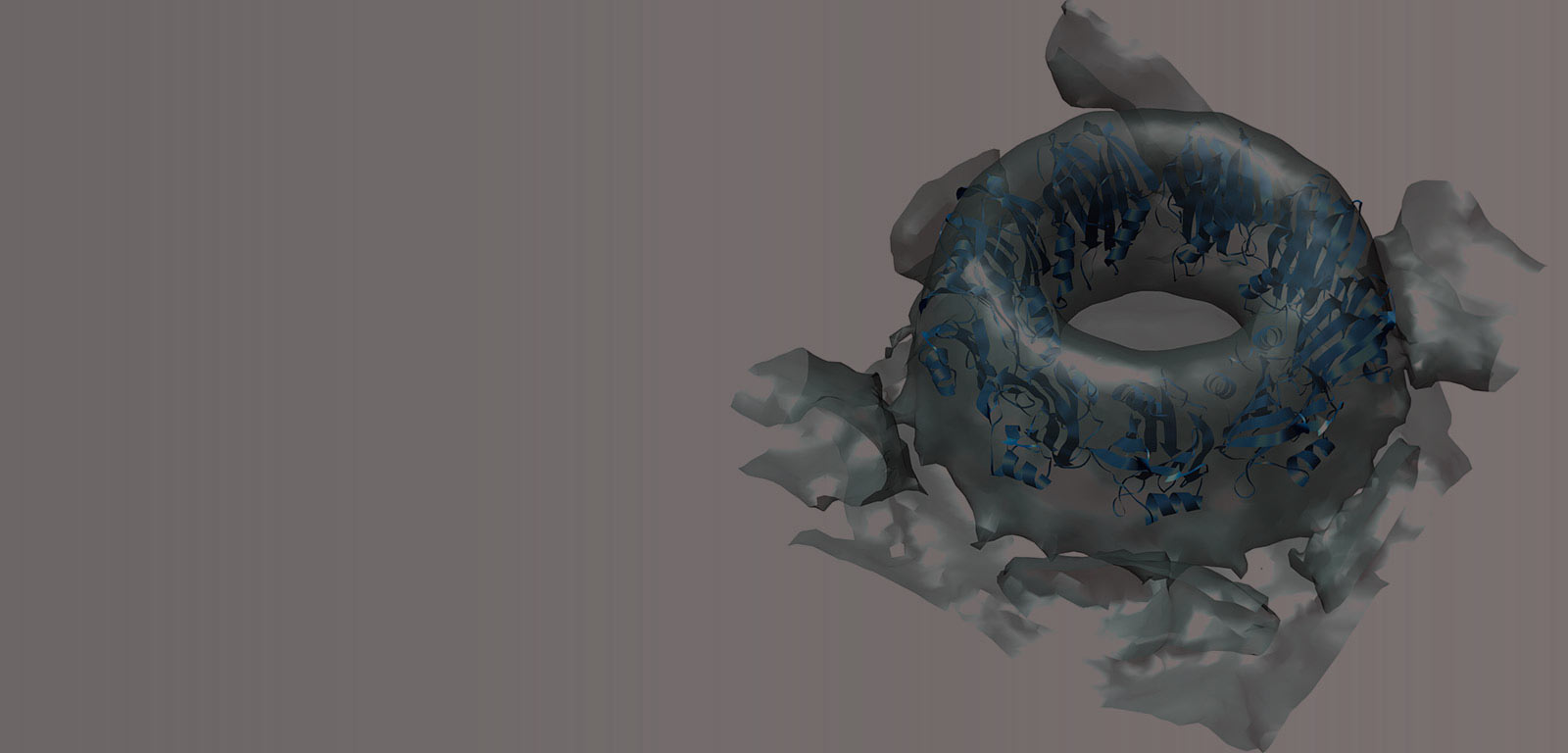Subject
Molecular Phamacology and Pharmacogenetics
General details of the subject
- Mode
- Face-to-face degree course
- Language
- Spanish
Teaching staff
| Name | Institution | Category | Doctor | Teaching profile | Area | |
|---|---|---|---|---|---|---|
| CALLADO HERNANDO, LUIS FELIPE | University of the Basque Country | Profesorado Pleno | Doctor | Bilingual | Pharmacology | lf.callado@ehu.eus |
| DIEZ ALARCIA, REBECA | University of the Basque Country | Personal Doctor Investigador | Doctor | Not bilingual | Pharmacology | r.diezalarcia@ehu.eus |
| ERDOZAIN FERNANDEZ, AMAIA MAITE | University of the Basque Country | Profesorado Agregado | Doctor | Bilingual | Pharmacology | amaia_erdozain@ehu.eus |
| GABILONDO URQUIJO, ANE MIREN | University of the Basque Country | Profesorado Agregado | Doctor | Bilingual | Pharmacology | ane.gabilondo@ehu.eus |
| HORRILLO FURUNDARENA, IGOR | University of the Basque Country | Profesorado Agregado | Doctor | Bilingual | Pharmacology | igor.horrillo@ehu.eus |
| MEANA MARTINEZ, JOSE JAVIER | University of the Basque Country | Profesorado Catedratico De Universidad | Doctor | Not bilingual | Pharmacology | javier.meana@ehu.eus |
| ORTEGA CALVO, JORGE | University of the Basque Country | Profesorado Agregado | Doctor | Bilingual | Pharmacology | jorge.ortega@ehu.eus |
| PEÑAGARIKANO AHEDO, OLGA | University of the Basque Country | Personal Doctor Investigador | Doctor | Not bilingual | Pharmacology | olga.penagarikano@ehu.eus |
| RIVERO CALERA, GUADALUPE | University of the Basque Country | Profesorado Agregado | Doctor | Bilingual | Pharmacology | guadalupe.rivero@ehu.eus |
| URIGUEN ECHEVERRIA, LEYRE | University of the Basque Country | Personal Doctor Investigador | Doctor | Not bilingual | Pharmacology | leyre.uriguen@ehu.eus |
Study types
| Type | Face-to-face hours | Non face-to-face hours | Total hours |
|---|---|---|---|
| Lecture-based | 14 | 16 | 30 |
| Seminar | 18 | 16 | 34 |
| Applied laboratory-based groups | 12 | 23 | 35 |
| Applied computer-based groups | 6 | 20 | 26 |
Training activities
| Name | Hours | Percentage of classroom teaching |
|---|---|---|
| Expositive classes | 70.0 | 50 % |
| Handling experimental equipment and facilities | 20.0 | 50 % |
| Presentations and Papers | 15.0 | 33 % |
| Reading and practical analysis | 10.0 | 0 % |
| Working with it equipment | 10.0 | 50 % |
Assessment systems
| Name | Minimum weighting | Maximum weighting |
|---|---|---|
| Attendance and participation | 16.0 % | 20.0 % |
| Critical debate in the classroom | 10.0 % | 20.0 % |
| Multiple-choice examination | 10.0 % | 20.0 % |
| Practical tasks | 10.0 % | 20.0 % |
| Presentations | 10.0 % | 20.0 % |
Ordinary call: orientations and renunciation
PROCEDIMIENTO DE EVALUACIÓN• Presencia y participación en las actividades.
• Preparación, discusión y defensa de trabajos.
• Examen de múltiple elección
• Entrega de la publicación analizada
(*) Este método de evaluación podría sufrir cambios si las directrices de las autoridades sanitarias así lo estableciesen. Las oportunas modificaciones se anunciarían oportunamente, contando con las estrategias y herramientas necesarias para garantizar el derecho del alumnado a ser evaluado con equidad y justicia
Temary
Lesson 1. Molecular basis of pharmacological selectivity. Biological targets of drugs. Receptors, channels, enzymes and transport proteins.Lesson 2. Molecular models for drug-target interaction. Pharmacological agonism and antagonism. Quantification of the pharmacological effect. Analysis of dose-response relationship.
Lesson 3. Molecular structure of GPCRs and other drug targets. Signalling pathways. Functional selectivity or "agonist bias". Receptor dimerization/oligomerization. Molecular aspects of vasopressin receptors and their signalling.
Lesson 4. Kinetics of drugs in tissues. The time course of drug effect. Lesson
5. Long-term use of drugs: drug tolerance and dependence. Regulation of targets and signalling systems. Structure and regulation of drug metabolizing enzymes. Lesson
6. Genetic basis of individual drug response: pharmacogenetics. Pharmacogenetics of drug metabolism: genetic pharmacokinetics. Pharmacogenetics of biological drug targets: genetic pharmacodynamics. Lesson
7. Animal models in biomedical research. The laboratory animal. Translational studies in animal models. Generation of experimental animal models. Phenotypic characterization of animal models. Study techniques and handling of circuits involved in neurobehavioral processes. Application to neuropsychiatric diseases.
PRACTICAL PROGRAM
Practice 1. In vitro biochemical and functional assay of ¿ opioid receptor to determine its pharmacological properties.
Practice 2. Analysis of experimental data using GraphPad Prism® program. Interpretation of results.
Bibliography
Basic bibliography
Molecular pharmacology. A short course. T. Kenakin. Blackwell Science, 1997.A Pharmacology Primer. Techniques for more effective and strategic drug discovery. T.P. Kenakin. 4th edition. Academic Press, 2014.
Receptores para neurotransmisores. J.A. García-Sevilla y A. Pazos. Ediciones en Neurociencias, 2003.
Fundamentos de Farmacología Básica y Clínica. 2ª edición. M. Ruiz Gayo y M. Fernández Alfonso. Editorial Médica Panamericana, 2013.
Farmacogenética. J.A. Carrillo, J.M. Ladero, J. Benítez. En: Velázquez, Farmacología Básica y Clínica; P. Lorenzo et al. editores. 18ª edición. Editorial Médica Panamericana, Madrid 2008.
Principles of drug action. The basis of the Pharmacology. 3rd edition. W. Pratt and P. Taylor. Churchill Livingston, 1990.
Farmacología humana. 6ª edición. J. Flórez. Elsevier-Masson, 2014.
Farmacología. 7ª edición. Rang y Dale. Elsevier España, 2012.
GPCR molecular pharmacology and drug targeting. A. Gilchrist. John Wiley and Sons, 2010.
Pharmacogenetics. Wendell Weber. 2nd edition. Oxford University Press, 2008.
Quantitative Molecular Pharmacology and Informatics in Drug Discovery. M. Lutz and T. Kenakin. John Wiley and Sons, 1999.
Pharmacogenetics and individualized therapy. A-H. Maitland-van der Zee and A.K. Daly. John Wiley & Sons, 2012.
Principles of Pharmacogenetics and Pharmacogenomics. R.B. Altman, D. Flockhart and D.B. Goldstein. Cambridge University Press, 2012.
Textbook of personalized Medicine. Kewal K. Jain. Humana Press, 2015. http://link.springer.com/book/10.1007%2F978-1-4419-0769-1.
Ion Channels. S.A. Siegelbaum, J. Koester. In: Principles of Neural Science. E.R. Kandel, J.H. Schwartz and T.M. Jessell. Elsevier, 2012.
Handbook of Laboratory Animal Science (2nd edition), Vol 1, Essential Principles and Practices. Jann Hau and Gerald L. Van Hoosier, Jr. (eds). CRC Press, 2003.
What's Wrong With My Mouse? Behavioral Phenotyping of Transgenic and Knockout Mice¿. Crawley JN (2nd edition), John Wiley and Sons, 2007.


